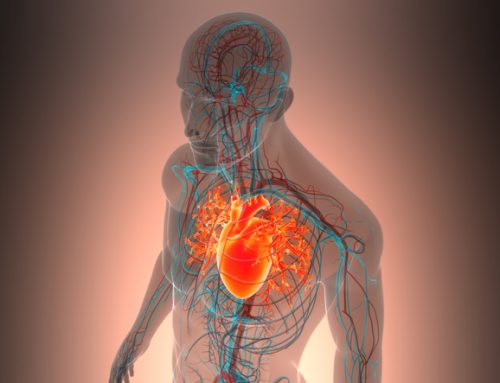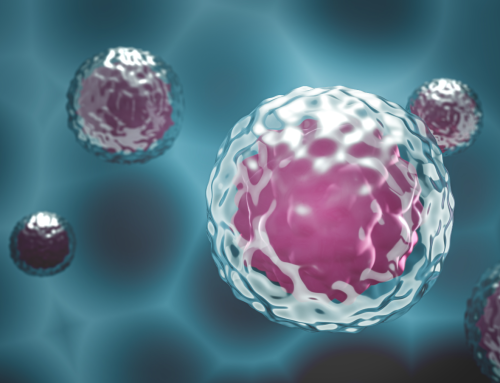As we get older, our bodies synthesize less and less Coenzyme Q10. This is unfortunate because we need adequate Coenzyme Q10 to generate ATP energy and to provide antioxidant protection against harmful free radicals. Coenzyme Q10 is necessary for good heart muscle health.

Prof. Urban Alehagen is the lead researcher on the KiSel-10 study that has investigated for the first time the therapeutic effects of combined CoQ10 and selenium supplementation on the heart muscle.
Many of us live in regions with low selenium content in our food. We need sufficient selenium supply for our bodies to synthesize selenoproteins. Several of these selenoproteins have antioxidant properties. Some of them regulate thyroid function.
However, our bodies cannot synthesize selenium for us. For example, in a rural municipality in Sweden, we found that community-living elderly citizens, average age 78 years, had a mean serum CoQ10 concentration of 0.82 mg/L and a serum selenium concentration of 67.1 mcg/L, both values considerably below the level of optimal physiological supply. Four years of daily supplementation with 200 mg Coenzyme Q10 and 200 mcg of selenium raised the serum levels to 2.17 mg/L and 210 mcg/L, respectively [ref 17].
For 48 months, the KiSel-10 research team administered a combination of 200 mg of ubiquinone Coenzyme Q10 and 200 mcg selenium (from selenium-enriched yeast) or matching placebos to the senior citizens [ref 1]. In the following years, they have published an initial report on the study outcomes plus 26 sub-analyses of the study data. In this article, we summarize, briefly, the outcomes of those 27 published bio-medical journal articles.
Significant Outcomes Associated with the Combined CoQ10 and Selenium Supplementation
1. Initial report: Reduction of cardiovascular mortality and improvement of cardiac function seen in echocardiography [ref 1]
2. Reduction of the plasma levels of N-terminal natriuretic peptide (NT-proBNP), a bio-marker for increased risk of heart failure [ref 2]
3. Improvement in health-related quality of life with more days out of hospital [ref 5]
4. Demonstration of a clinical advantage in using combined Coenzyme Q10 and selenium supplements if there are deficiencies within the population [ref 3]
5,6. Reduction of cardiovascular mortality that persisted after 10 and 12 years in the supplemented group and also in supplemented subgroups with diabetes, hypertension, and ischemic heart disease [refs 6, 12]
7. Reduction in plasma levels of two bio-markers for oxidative damage [ref 7]
8,9. Reduction in plasma levels of six bio-markers for systemic inflammation [refs 4, 14]
10. Reduction in serum levels of seven bio-markers for fibrosis [ref 11]
11. Reduction in plasma levels of the von Willebrand factor and the plasminogen activator inhibitor-1, both bio-markers for endothelial dysfunction [ref 16]
12. Increase in plasma levels of insulin-like growth factor-1, attenuating an age-related decline in IGF-1 concentrations [ref 13]
13. Reduction in serum fructosamine concentrations compared with the concentrations in the placebo group, which tended to increase. Note: greater fructosamine concentration is positively associated with incidence of diabetes and increased blood glucose level [ref 17]
14. Improvement in renal function in elderly citizens deficient in selenium [ref 18]
15. Prevention of an increase in plasma D-dimer levels, which are associated with increased risk of thrombotic disorders and endothelial dysfunction [ref 19]
16. Changes in metabolic profiles and changes in the pentose phosphate, the mevalonate, the beta-oxidation, and the xanthine oxidase pathways [ref 15]
17. Changes in microRNA levels in plasma samples [ref 10]
18,19. Documentation of higher cardiovascular mortality in the subgroup with lower serum selenium concentrations (less than 65 mcg/L) compared with the subgroup with higher serum selenium concentrations (greater than 85 mcg/L) [refs 8, 9]
20. Application of structural equation modelling to the KiSel-10 study clinical outcomes and biomarkers and demonstration of the relevance of oxidative stress, systemic inflammation, and tissue fibrosis to the risk of cardiovascular mortality [ref 20]
21. Decrease in plasma concentrations of fibroblast growth factor 23 [ref 21]
22. Reduction in the extent of telomere shortening in whole-blood circulating leukocytes [ref 22]
23. Increase in serum sirtuin SIRT1 concentrations [ref 23]
24. Increase in serum free thiol levels and improvement in systemic redox status [ref 24]
25. Demonstration of an anti-ageing effect in five age-related blood biomarkers [ref 25]
26. Increase in free T3 and reverse T3 thyroid hormones, decrease in free T4 hormones, and diminished increase in TSH levels in plasma samples [ref 26]
27. Increase in selenoprotein P expression and significant associations between SELENOP level and inflammation, telomere length, quality of life, and survival [ref 27].
Conclusion: Coenzyme Q10 and Selenium in Combination
The results of the KiSel-10 trial studies and sub-studies have shown several important persistent associations between augmented CoQ10 and selenium and SELENOP concentrations in the blood and health-related benefits. Notable among these benefits have been improved survival and improved health-related quality of life.
References
1. Alehagen U, Johansson P, Björnstedt M, Rosén A. Cardiovascular mortality and N-terminal-proBNP reduced after combined selenium and coenzyme Q10 supplementation: A 5-year prospective randomized double-blind placebo-controlled trial. Int J Cardiol. 2013;167:1860-1866.
2. Johansson P, Dahlstrom O, Dahlstrom U, Alehagen U. Effect of selenium and Q10 on the cardiac biomarker NT-proBNP. Scand Cardiovasc J. 2013;47:281-8.
3. Alehagen U, Aaseth J. Selenium and coenzyme Q10 interrelationship in cardiovascular diseases – A clinician’s point of view. J Trace Elem Med Biol. 2015;31:157-62.
4. Alehagen U, Lindahl TL, Aaseth J, Svensson E. Levels of sP-selectin and hs-CRP decrease with dietary intervention with selenium and coenzyme Q10 combined: a secondary analysis of a randomized clinical trial. PLoS One. 2015;10:e0137680.
5. Johansson P, Dahlstrom O, Dahlstrom U, Alehagen U. Improved health-related quality of life, and more days out of hospital with supplementation with selenium and coenzyme Q10 combined. J Nutr Health Aging. 2015;19:870-7.
6. Alehagen U, Aaseth J, Johansson P. Reduced cardiovascular mortality 10 years after supplementation with selenium and coenzyme Q10 for four years: follow-up results of a prospective randomized double- blind placebo-controlled trial. PLoS One. 2015; 10(12):e0141641.
7. Alehagen U, Aaseth J, Johansson P. Less increase of copeptin and MR-proADM due to intervention with selenium and coenzyme Q10 combined: Results from a 4-year prospective randomized double-blind placebo-controlled trial among elderly Swedish citizens. Biofactors. 2015;41:443-52.
8. Alehagen U, Johansson P, Björnstedt M, Rosén A. Relatively high mortality risk in elderly Swedish subjects with low selenium status. Eur J Clin Nutr. 2016;70:91-6.
9. Alehagen U, Alexander J, Aaseth J. Supplementation with selenium and coenzyme Q10 reduces cardiovascular mortality in elderly with low selenium status: a secondary analysis of a randomised clinical trial. PLoS One. 2016;11:e0157541.
10. Alehagen U, Johansson P, Aaseth J, Alexander J. Significant changes in circulating microRNA by dietary supplementation of selenium and coenzyme Q10 in healthy elderly males: A subgroup analysis. PLoS One. 2017;12:e0174880.
11. Alehagen U, Aaseth J, Alexander J, Svensson E. Less fibrosis in elderly subjects supplemented with selenium and coenzyme Q10: A mechanism behind reduced cardiovascular mortality? Biofactors. 2018;44:137-147.
12. Alehagen U, Aaseth J, Alexander J, Johansson P. Still reduced cardiovascular mortality 12 years after supplementation with selenium and coenzyme Q10 for four years: A validation of previous 10-year follow-up results of a prospective randomized controlled trial. PLoS One. 2018;13:e0193120 .
13. Alehagen U, Johansson P, Aaseth J, Alexander J. Increase in insulin-like growth factor 1 (IGF-1) and insulin-like growth factor binding protein 1 after supplementation with selenium and coenzyme Q10. PLoS One. 2017;12:e0178614.
14. Alehagen U, Alexander J, Aaseth J, Larsson A. Decrease in inflammatory biomarker concentration by intervention with selenium and coenzyme Q10: a subanalysis of osteopontin, osteoprotergerin, TNFr1, TNFr2 and TWEAK. J Inflamm (Lond). 2019;16:5.
15. Alehagen U, Johansson P, Aaseth J, Alexander J. Significant changes in metabolic profiles after intervention with selenium and coenzyme Q10 in an elderly population. Biomolecules. 2019;10:E553.
16. Alehagen U, Alexander J, Aaseth J, Larsson A. Significant decrease of von Willebrand factor and plasminogen activator inhibitor-1 by providing supplementation with selenium and Coenzyme Q10 to an elderly population. European Journal of Nutrition. 2020;59:3581-3590.
17. Alehagen U, Aaseth J, Alexander J, Johansson P. Supplemental selenium and coenzyme Q10 reduce glycation along with cardiovascular mortality in an elderly population with low selenium status. Journal of Trace Elements in Medicine and Biology. 2020;61:126541.
18. Alehagen U, Brismar K, Alexander J, Aaseth J. Selenium and Coenzyme Q10 supplementation improves renal function in elderly deficient in selenium: observational results and results from a subgroup analysis of a randomised placebo-controlled trial. Nutrients. 2020;12(12):3780.
19. Alehagen U, Aaseth J, Lindahl TL, Alexander J. Dietary supplementation with selenium and Coenzyme Q10 prevents increase in plasma D-dimer while lowering cardiovascular mortality in an elderly Swedish population. Nutrients. 2021;13:1344.
20. Alehagen U, Johansson P, Svensson E, Aaseth J, Alexander J. Improved cardiovascular health by supplementation with selenium and coenzyme Q10: applying structural equation modelling (SEM) to clinical outcomes and biomarkers to explore underlying mechanisms in a prospective randomized double-blind placebo-controlled intervention project in Sweden. Eur J Nutr. 2022 Sep;61(6):3135-3148.
21. Alehagen U, Aaseth J, Larsson A, Alexander J. Decreased concentration of fibroblast growth factor 23 (FGF-23) as a result of supplementation with selenium and Coenzyme Q10 in an elderly Swedish population: a sub-analysis. Cells. 2022 Feb 1;11(3):509.
22. Opstad TB, Alexander J, Aaseth JO, Larsson A, Seljeflot I, Alehagen U. Selenium and Coenzyme Q10 intervention prevents telomere attrition, with association to reduced cardiovascular mortality-sub-study of a randomized clinical trial. Nutrients. 2022 Aug 15;14(16):3346.
23. Opstad TB, Alexander J, Aaseth J, Larsson A, Seljeflot I, Alehagen U. Increased SIRT1 concentration following four years of selenium and Q10 intervention associated with reduced cardiovascular mortality at 10-year follow-up-sub-study of a previous prospective double-blind placebo-controlled randomized clinical trial. Antioxidants (Basel). 2023 Mar 21;12(3):759.
24. Dunning BJ, Bourgonje AR, Bulthuis MLC, Alexander J, Aaseth JO, Larsson A, van Goor H, Alehagen U. Selenium and coenzyme Q10 improve the systemic redox status while reducing cardiovascular mortality in elderly population-based individuals. Free Radic Biol Med. 2023 Aug 1;204:207-214.
25. Alehagen U, Alexander J, Aaseth JO, Larsson A, Svensson E, Opstad TB. Effects of an intervention with selenium and coenzyme q10 on five selected age-related biomarkers in elderly Swedes low in selenium: results that point to an anti-ageing effect-a sub-analysis of a previous prospective double-blind placebo-controlled randomised clinical trial. Cells. 2023 Jul 4;12(13):1773.
26. Alehagen U, Alexander J, Aaseth JO, Larsson A, Opstad TB. Supplementation with selenium and coenzyme Q10 in an elderly Swedish population low in selenium — positive effects on thyroid hormones, cardiovascular mortality, and quality of life. BMC Med. 2024;22:191.
27. Alehagen U, Aaseth J, Schomburg L, Larsson A, Opstad T, Alexander J. Selenoprotein P increases upon selenium and coenzyme Q10 supplementation and is associated with telomere length, quality of life and reduced inflammation and mortality. Free Radic Biol Med. 2024 Jul 2;222:403-413.
The information presented in this review article is not intended as medical advice. It should not be used as such.








Leave A Comment